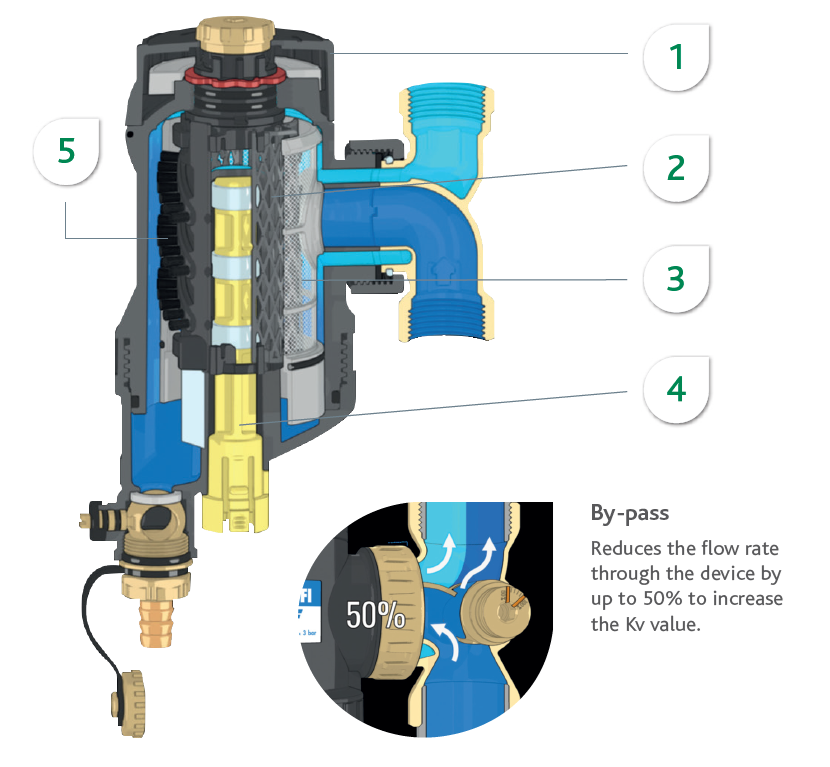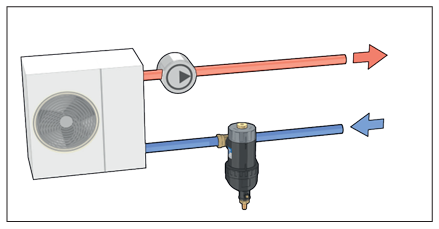Introducing the Caleffi XF
The CALEFFI XF magnetic filter separates impurities in the system to minimise the problem of filter mesh clogging. Its operation is based on the action of three separate elements to continuously protect the generator and devices against any impurities that may form in the hydraulic circuit, both at system start-up and in normal operating conditions. The water in the system first passes through the internal mesh element (2), which separates the coarse impurities by collision, causing them to precipitate into the large lower collection chamber. A central magnet (4) then captures and retains ferrous impurities down to the smallest sizes. Finally, the water passes through the outlet strainer (3), which has a large filtration surface and very fine mesh (0,16 mm) to capture all the residual impurities not blocked by the first two elements.
A filter designed with heat pumps in mind...
When selecting a filter to install on a heat pump, considerations must be made so that the systems can remain operational and flow rates, and ultimately efficiency, can be maintained.
No shut-off valves are required for maintenance as the device has a mechanism for cleaning the filter mesh with internal brushes (5). Turning the knob at the top (1) makes the brushes clean the inside of the filter, and the impurities fall into the bottom of the component.
The Caleffi XF filter has been designed with heat pumps in mind. The self-cleaning function described, which minimises downtime and makes maintenance easy, ensures the heat pump system is kept running, something that is essential, especially in colder months, to maintain the desired temperature output.

Installation of the Caleffi XF
The Caleffi XF (pictured in the diagram), should be installed in accordance with the flow direction indicated by the arrow on the tee fitting. It is preferable to install it upstream of the generator.
The larger sizes (DN 40 and DN 50) have a by-pass to restrict the flow rate passing through the device by up to 50 %, thereby increasing the Kv value and reducing the energy used by the circulator.

